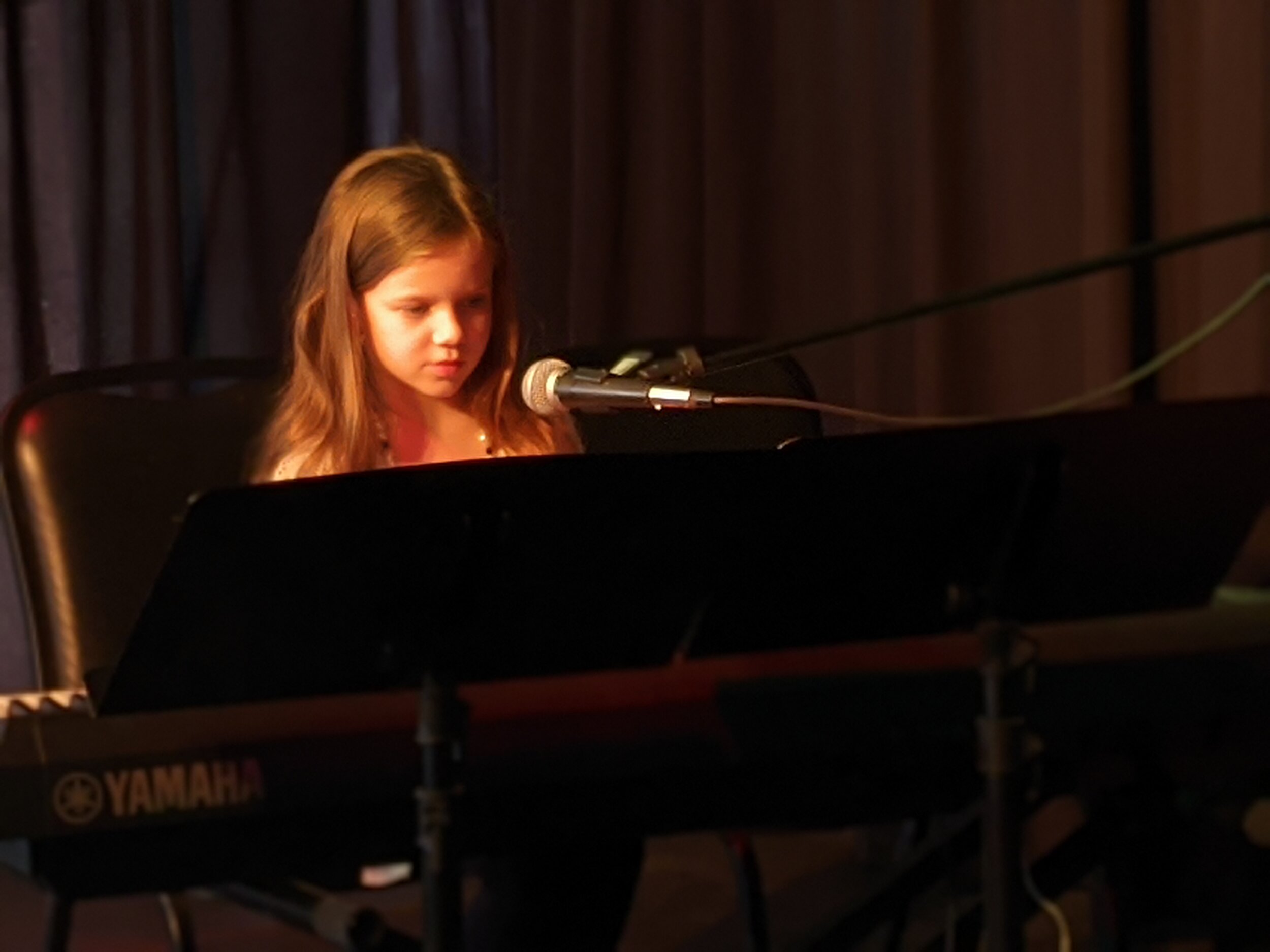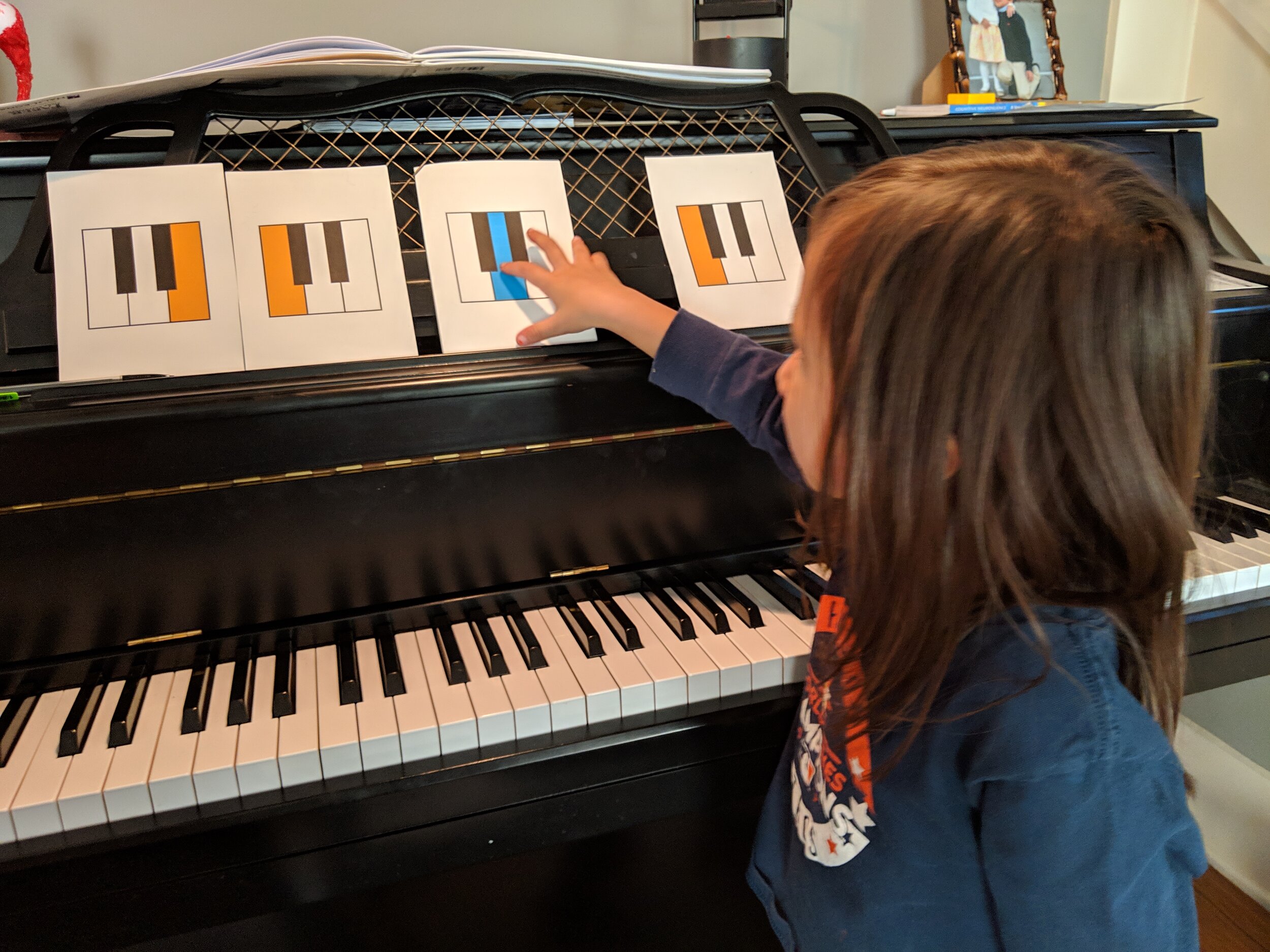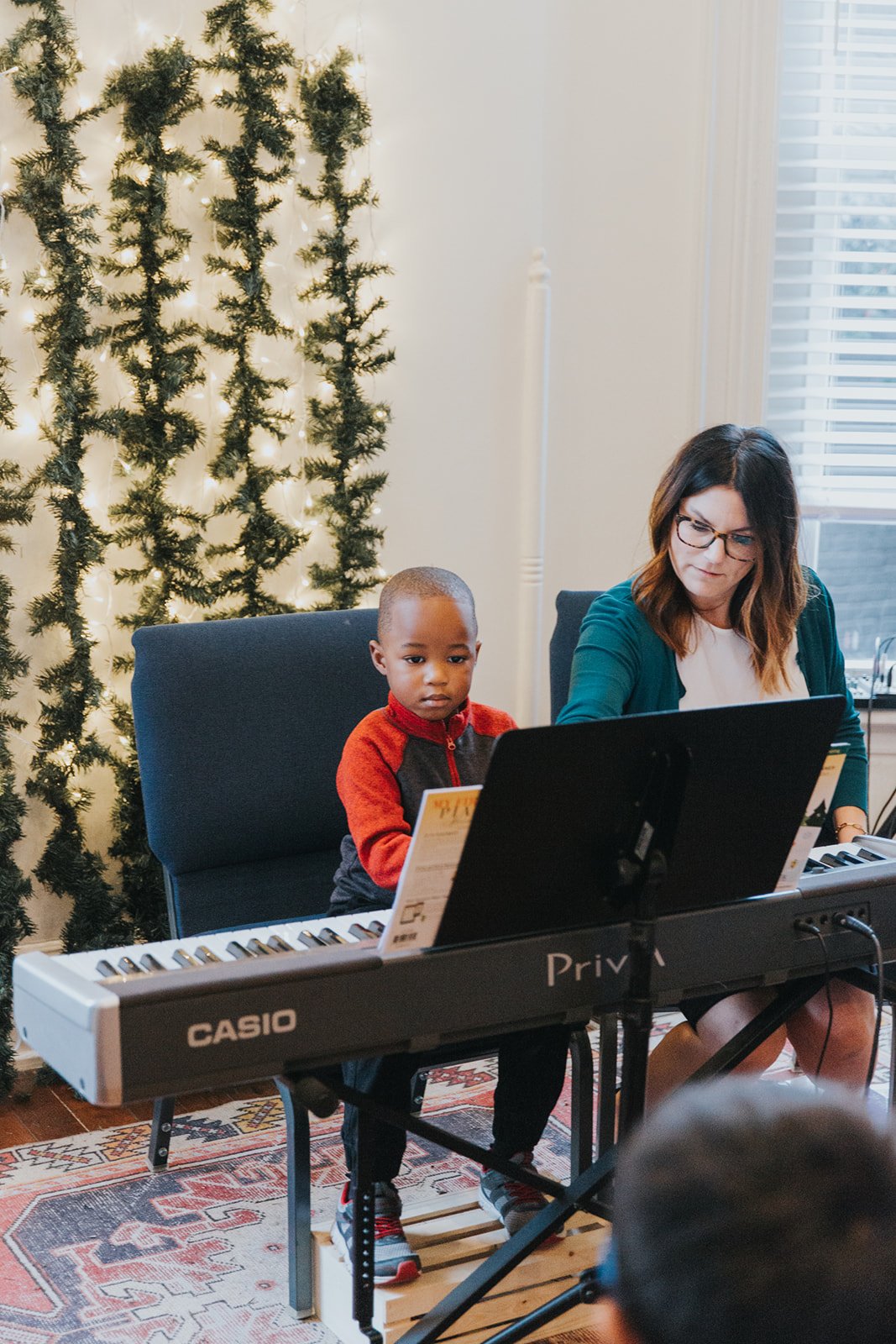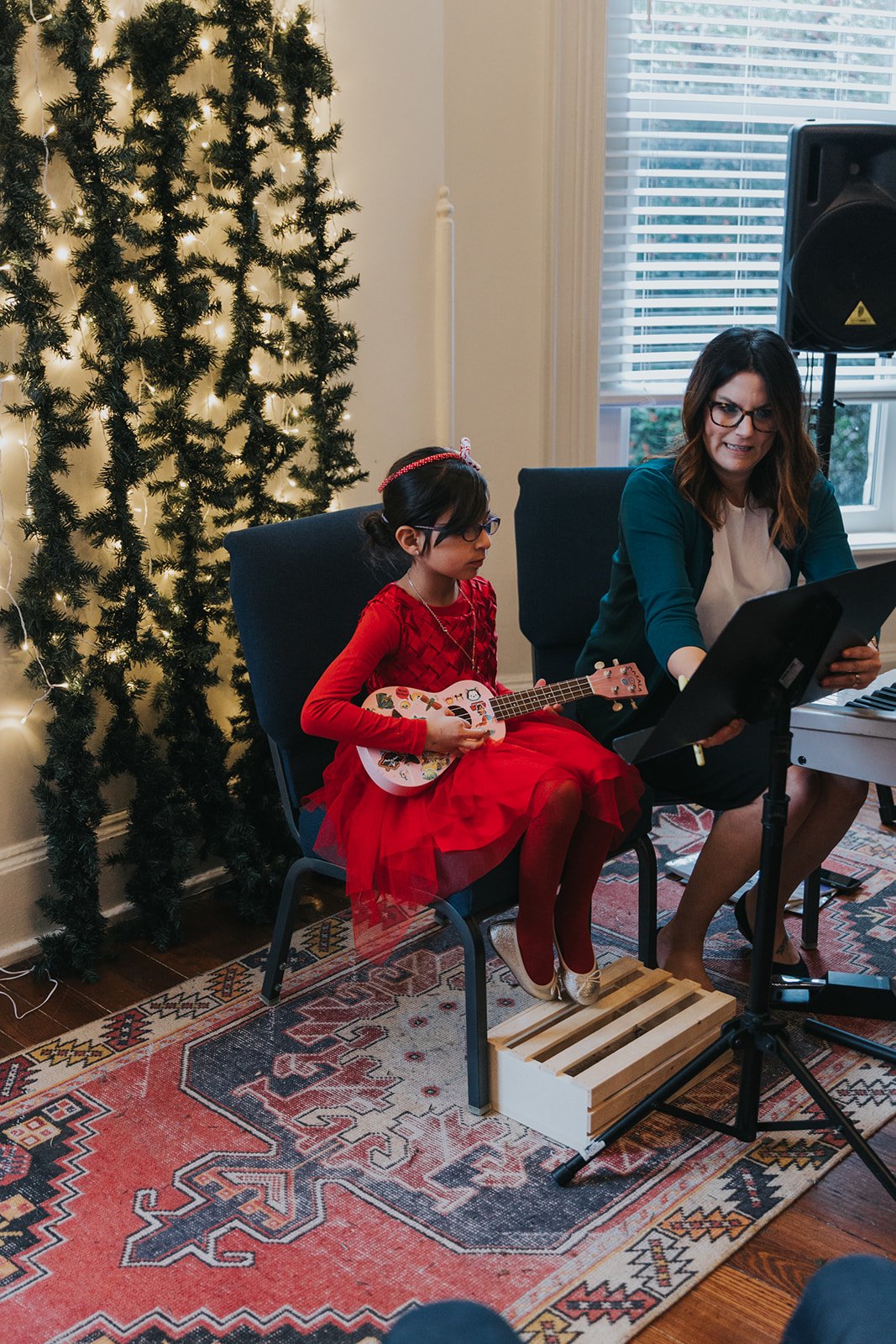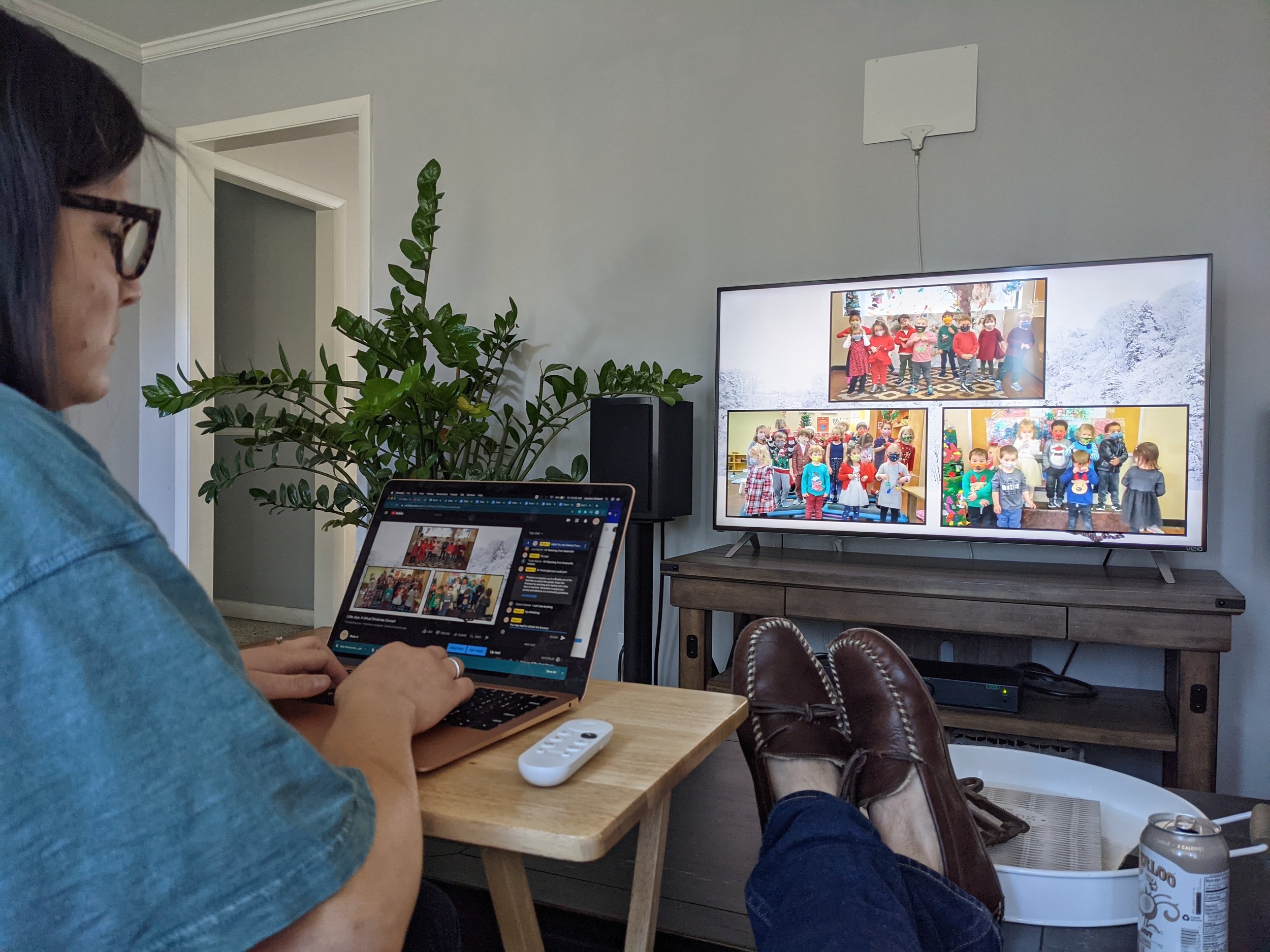Six Fun Ways to Use Bear Paw Creek Props with Songs from Out There In The Wild
At Music U, we believe music comes alive when we add movement, imagination, and a little bit of magic — and Bear Paw Creek's creative props make it even easier! I'm thrilled to share a few favorite ways to pair their products with songs from my new children's album, Out There In The Wild.
Here's how to turn a simple sing-along into a full-body, full-heart experience!
🌊 Motion of the Ocean — with Bear Paw Creek's Stretchy Band or Canopy Scarf
"Motion of the Ocean" invites kids to ride the waves, and Bear Paw Creek's Stretchy Band is the perfect tool for the journey:
"Waves go up and crash down" — lift the band high, then swoop it down low.
"The tide comes in and goes out" — move it forward and back with flowing, gentle movements.
"Currents rip from side to side" — sway the band left and right with fun bursts of energy.
Or, try using the Blue Canopy Scarf for a fun variation. The canopy scarf is a favorite in my classroom and can give the same song and movements a brand-new experience. You might even invite a few at a time to stand under the scarf and imagine being deep in the ocean watching motion above!
☔ Raindrops Falling on Me — Two props, one joyful song!
Spring showers feel extra magical with Bear Paw Creek's Wrist Streamers in hand. As you sing "Raindrops Falling on Me," invite children to gently place their streamers on the body parts mentioned in the song—head, shoulders, knees, toes, eyelashes, and nose—just like raindrops falling from the sky. It's a delightful way to support body awareness while reinforcing the rhythm and flow of the music.
As a variation, try Individual Creative Movement Chiffon Scarves! Kiddos love transforming them into imaginary puddles—spreading them across the floor and leaping in with squeals of joy. It's pure rainy-day magic, no umbrellas required.
🎈 Five Roly-Polies — with Bear Paw Creek's Balloon Ball
"Five Roly-Polies" is all about rolling, and Bear Paw Creek's Balloon Ball makes it extra interactive!
Roll the ball across the circle during every "roll, roly-poly" refrain — giving kids a chance to work on gentle pushes, teamwork, and timing.
Watch the smiles grow as they anticipate the ball coming to them!
🐞 Get Out Beetle — with Bear Paw Creek's Balloon Ball
You can keep the fun going with "Get Out Beetle!" Pass the Balloon Ball around the circle during the verses, and toss it in the air when you get to the big "Get Out Be-Be-Be-Beetle!" shout! Children can do this with partners, small groups, or even a big circle. It's a simple but exciting way to encourage listening skills, quick reactions, and group connection.
To extend the experience, "Get Out Beetle!" also comes with a picture book, interactive digital book, and a teaching guide full of extension activities to bring the story and song to life in even more ways.
At Music U, we love seeing how Bear Paw Creek's beautifully made props can turn a musical moment into an unforgettable memory. Whether you're singing songs from Out There In The Wild at home, in a classroom, or outside under the sky, these props help kids move, explore, and fall in love with music again and again.
Out There In The Wild by Jes Cleland is available on May 9th, wherever you stream music — we can't wait for you to sing, dance, and explore along with us!
Enhancing Your Child's Musical Journey: Family-Friendly Ways To Experience Live Music In Nashville!
Discover the benefits of experiencing live music with your family in Nashville! From inspiring performances to active listening, Music U explores how family-friendly concerts, festivals, and venues can enhance your young musician's journey. Read on for tips and top spots to experience music in Music City!
Be Part Of The Band! - Discovering Nashville's Options for Young Musicians
Unleash Creativity: The Power of Composition for Young Musicians
Jes Cleland Featured on Season 4 Episode 20 of Musicast from F-flat books
Making Practice Playful! Our List of The Top 3 Types of Games to Play During Music Lessons
Turn music practice into a thrilling adventure! This guide explores the benefits of gamifying music lessons and unveils engaging games to boost motivation, learning, and retention. Discover rhythm, note recognition, and ear training games, plus tech tools to supercharge your practice. Unleash the joy of music and make learning an instrument FUN!
Musical Momentum: 5 Ways to Achieve Year-Round Success, Beginning this January!
Though some people love New Year's resolutions, and some think they may not be very effective, we at Music U think that any time is a great time to build good musical habits. The skills we are presenting can be picked up at any point in your musical journey, but since there is no time like the present, this month can be a great time to reset, reassess, and, most importantly, renew your love of music and the joy of playing an instrument! So, with that in mind, we’ve outlined below 5 great ways to achieve musical success throughout the year!
The Magic of Holiday Music for Children: Turn Your Favorite Song Into A Lullaby!
Discover the enchanting world of holiday music for children! Dive into the rich history of festive melodies and learn how to turn your favorite tunes into soothing lullabies. Explore the benefits of singing these timeless songs to your child, fostering bonding, language development, and joyful family connections. Join us at Music U as we unwrap the magic of holiday traditions through the power of music!
How to Prepare Your Child for a Music Recital
Harmonious Learning: Unlock the Benefits of Music Collaboration for Your Child
Any form of collaboration, whether it be on a sports team, a dance team, a theater group, or a music ensemble, can hold immense potential for kids. But music specifically has added benefits for children who join a collaborative group like a band, ensemble, choir, or songwriting team. It's not just about playing instruments or singing in harmony; it's about nurturing a range of skills that go beyond the music itself.
How to Stick to a Regular Practice Routine Despite a Busy Schedule
Guiding the Musical Journey: A Parent's Role In Practice Time
Music has the incredible power to inspire, captivate, and enrich our lives. For young students embarking on their musical journey, parental involvement can be a guiding light. Beyond the formal music lessons, parents play a vital role in supporting, motivating, and nurturing their child's practice sessions. In this article, we'll delve into the pivotal importance of parental engagement and explore how you can create an environment that fosters musical growth and enjoyment.
Celebrating 10 Years of Music U
This week, Music U is turning ten years old! On May 31st, 2013, I worked my last shift as a toddler teacher at McKendree UMC daycare and returned the following week as McKendree’s music teacher with my newly created business, Music U. Since then, we’ve grown, and a few things have changed but the mission I started with remains: to bring quality, relevant and engaging music education to children.
Today, Music U offers music classes in three preschools and daycares in the Nashville area and is looking to bring these energetic and meaningful music classes to even more in the coming months. I’ve written quite a few handfuls of children’s songs that we frequently sing in classes, and recently, I had the joy of turning one of those original songs into a picture book! In addition to our preschool group classes, Music U Studio offers private lessons in piano, ukulele, guitar, bass, drums, percussion, voice, and songwriting in homes and preschools all over town, with over 65 active private students and seven teachers.
We’ve had some enjoyable and memorable moments over the past ten years. Here are a few:
2013: Music is formed, and I teach the first Music U class at McKendree UMC Daycare.
Facebook post from my last day of work before Music U was my full-time gig!
2014: The children at Mckendree UMC perform in Music U’s very first Christmas program!
2018: June - Cameron and Jes perform at Musicians Corner in the Kidsville section.
December - We now have enough private students to offer our first winter recital.
2019: January - Music U hires our first additional private piano teacher.
Krystol Wade, a fantastic pianist, teacher, songwriter and recording artist, joins the Music U team!
August - First Ukulele and Cocktails workshop for adults!
2020: We begin offering virtual classes, lessons and recitals due to COVID 19
I typically give stickers at the end of lessons but for zoom lessons, children picked where to put them on my face!
A video premiere for our preschool Christmas program, so that parents could collectively watch and comment live!
2021: August - Three more private lesson teachers are added to the Music U team.
Cameron Cleland (my husband), who had been teaching for other studios, begins teaching guitar, bass and drums for Music U!
Haley Giffen joins and is immediately a favorite with our youngest learners! She begins teaching piano, then adds guitar voice and drum students. She can do it all!
We are so lucky to have Tori, who holds a music degree with an emphasis in piano performance! She redently passed the BAR exam and teaches for us in the afternoons after spending her day as a lawyer!
December: Music U begins group classes at Bloom Academy.
2022: Release of first picture book and streamable song, Get Out, Beetle!
2023: Music U begins group classes at Lotus Learning Center with a new addition to the Music U team, Kat Mathis!
Whether you’ve been on this journey with us from the beginning or are new to Music U, I am thankful for you! We have some of the most amazing kiddos and families, and early childhood educators we’ve worked with over the years, and many of you have become dear friends of mine. I’ve watched your children grow and learn. I’ve watched them struggle and persevere. It’s been an unspeakable joy to dance, sing, wiggle, and learn alongside your children for ten years, and I look forward to the next ten!
7 Family Friendly Ways to Celebrate in Nashville This 4th of July Weekend
Relax, It's Island Music
I'll admit that the first time I thought about doing a genre study on "Island Music" it was because I was excited about an upcoming vacation to Hawaii, and couldn't resist getting in the vacation state of mind by spending all of July immersed in the sounds of the Islands! As it turns out, Island and Calypso music lends itself nicely to learning and practicing key concepts in music.
One of the first things I like to do when exploring any genre of music, is talk about what kinds of instruments help give the genre it's unique sound. One main ingredient in Calypso is the Steel Drum. I happen to own a small, portable steel drum, and every time I bring it in, it's a hit! The children get to see, hear, and touch the steel drum, so it's already a rich experience. When they get a turn to play it, they begin to understand how each different part of the drum makes a different sound or "pitch". They engage their fine motor skills to hold the small mallets and gently tap the drum to find the best sound.
Then we listen for the steel drum in some recorded music. This is huge. Being able to listen and pick out a sound among other sounds promotes "ear training" which helps improve pitch reference and articulation. Your ears can be trained just like many other muscles in your body. When you practice picking things out of a group of sounds you are focusing, recognizing, and recalling. So much exciting brain activity! We do this type of ear training with specific instruments, and then we take the entire genre and A/B it with other genres. Once we have picked out what kinds of instruments and characteristics make "Island Music" unique, we can pick that style out of a group of styles.
Another way we work on listening and recognizing is to listen to two versions of the same song in different styles. For this particular lesson I used a ukulele version of Somewhere Over The Rainbow, and compared it with a classic Judy Garland version. The children recognize right away which is an "Island" song and which is not, but more importantly, I want them to understand the similarities too. I want them to hear that the melodies are very similar and the lyrics follow a very similar pattern.
My favorite part about this theme is doing the Limbo! We have some fun and get our gross motor skills rev'd up by seeing "how low we can go!". The kids get a kick out of it, and the joy the music brings helps them experience a bit of the fun and relaxed nature from which the music is created. On this particularly fun occasion, I had a guest come in and teach us Hula Dancing! It was the best!
All The Feels about Major and Minor
It may be a bit lofty of a goal to try to teach the theory of major and minor chords or modes to preschool students. So I don't try to do that. However, young children CAN learn the difference between major and minor chords by how the sound makes them feel! We all know by now that these young minds and hearts have all the feels, right? They know when they feel sad, happy, scared, or excited, and we can use what they know to help them understand the concept of major vs minor in music. I start by explaining the terms as simply as I can. I use the classic "happy face/Sad face" symbol, picture an emoji. The happy face says Major on it and the Sad face says Minor on it. Most of the children I teach can't read yet, but they sure know what the happy and sad face represents. Every time I hold up the happy face, I say "major" and sad face, "minor". We do this several times so they begin to associate the icons with those terms.
My piano doesn't get used much in the class as I play most of our sing along songs on the ukulele, but I find this lesson works well with a keyboard. I play them a major chord, and let them know it's a major chord. We all recognize that it sounds pretty "happy" then I alter the third in the chord to make it minor. Now it sounds a bit sad. I play several chords like this as we practice listening and making the distinction. I find that it's super helpful to take a song we know and love, "You are My Sunshine" and play it once through normally, with all major chords. Then I play the same song with all minor chords. So tragic I tell ya! The children immediately notice how sad that familiar song can become when we change the chords to minor!
Throughout the rest of the month we do activities that promote listening and expression. Week two we colored on a sheet that was split in half: happy face/sad face. The children listened to a medley of different pieces of music. They chose to color on whichever side that corresponded with how the children felt when they heard it. Then we incorporated a bit of drama when we used our face and body to depict how the music was making us feel. It's fun and keeps them engaged!
We finished up the month with a guest musician on the mandolin. Our guest even talked a bit about major and minor and the children were able to pick out which songs were major and which were minor! They had a blast learning about and listening to the mandolin
Dynamically Different
Dynamics is where it all began for me. It's the first lesson I ever developed for this age group and I think it's one of the more engaging themes that we do each year. I think it came to me first because it's an easy concept to learn. Loud, soft, getting louder, getting softer. These are things that children can understand and then easily apply to music.
We start with learning a couple of terms: forte and piano. Forte in music means loud. Now, there is a whole spectrum of dynamics and we only touch on a few of them, but for teaching purposes, we learn Forte (loud) and Piano (soft). I show them the actual symbol that is used in sheet music so that they can associate the icon with the term. This kind of "icon association" is a developmental standard starting at the young toddler age. We practice by shouting FORTE!! when we see the forte symbol, and whispering "piano" when we see the piano symbol. I hold up the signs and try to trick them... it becomes a fun game! Then, I let the children hold up the sign themselves for their friends.
Once we fully understand the Forte/Piano concept, we can apply it to music. I let the children hold up the sign while we sing a song. The child can change the dynamics of the song while we are singing and the rest of us react by singing loudly or softly.
Later in the month, I introduce the terms crescendo and decrescendo. These are the musical words for getting gradually louder or softer. There's a symbol for these too! With these I like to incorporate our hands and arms. We start with our hands close together and we sing a note "laaaa" and as we get louder, our hands grow further apart, demonstrating that the volume is growing. We do the same with the reverse, decrescendo.
The children are now ready to identify these dynamic occurrences while listening to music. I try to find some classical music that is very dynamic and we use our bodies to show that we can hear when the music is soft or loud or getting softer or getting louder by crouching down and standing tall. We are incorporating their gross motor skills into their cognitive learning to reinforce the concepts. It's a lot of fun, and really effective! I think the favorite this year was listening to the opening theme of Star Wars! LOTS of dynamic changes in that one!
I think my favorite part about this theme is seeing the teachers use it in their classrooms for volume control. Now, instead of telling everyone to be quiet or that they are too loud, They can say, "let's all speak at a piano level", or... "I can hear you crescendo as you play with your friends, now let's try a decrescendo back down to piano". Now it becomes an activity, or a transitional aide instead of a command. I used it a bunch as a full time teacher in the toddler room!
The most fun part is when I bring in the drum set and we all practice playing dynamically! The children were able to use what they had learned and apply it as they created music on the drums!
I hope that you find ways to use and have fun with dynamics in your home. Dynamics are everywhere and it's so beneficial, at any age, to take the time to notice and listen to the changing dynamics around us.
I've Got Rhythm
Teaching young children about rhythm can be tricky. Many are barely learning to count and the concepts of subdividing a measure can sometimes be a little over their heads. In the past I have always used fruit to help children remember note values. For example, "grape" would be a quarter note, one beat. "Apple" would be 2 eighth notes, half of a beat. And we would clap out these fruit names and I would show pictures to reinforce these ideas. It worked to a certain degree, but I wasn't sure we were really grasping it completely. This year I tried something new.
As a private lesson teacher for piano and ukulele, I know that the books designed for early learners tend to use simple vocal sounds to emulate each note value. For instance "Ta" is said for every quarter note. For a half note (two beats) you simply say "ta-ah". I decided to use this method for the class and I think it went pretty well!
For the visual aspect of the learning process, I created a felt "measure". I divided my measure into four squares which represented each beat. then I created felt notes of varying values that we could stick in the squares to create different rhythms. We started with the quarter note and the quarter rest. We practiced saying "ta" and whispering "rest" as I let each student create their own 4 beat rhythm. The next week we moved on to half notes, whole notes and then of course the "big fat whole note" which the kids love to say! The children got the hang of it by week three and were becoming pros at chanting and clapping the rhythms. Not only were they correctly assigning value, but they were chanting and clapping in a much more steady beat than when we first started!
This kind of chanting, clapping, tapping, and learning will stay with them and help them in many other areas without them even realizing it. Clapping and chanting are all helpful contributors to literacy and increasing vocabulary! Children will begin to hear the natural "rhythm" in their speech. They will be better prepared when they begin reading and can use these tools for years to come! Not to mention, when they start learning about fractions down the road, we've already done some work! We had a lot of fun! We closed out the month with a special visit from some very talented musicians!
Kids and Celtic Music
I suppose my own Irish heritage predisposes me to being super excited about Celtic music, but I still think it's a fun genre to explore with kids regardless! The style of music is very different than a lot of what children hear on a regular basis. With it's unique instrumentation, driving 6/8 feel and the corresponding cultural aspects that come with it, Celtic music is such a rich style of music to study. It allows for a lot of new sounds and experiences for early learners!
As with most genres I introduce in Music U, I like to start by going over what instruments make up the sound of that genre. For Celtic music, we learn about the harp, accordion, bodhran drum, Irish Tin Whistle, fiddle and flute. I show them images, and then I like to show them videos of people playing these instruments in the Celtic style. This allows the children to see how the instrument is played. It also can help them see that perhaps instruments we have seen and learned about in other genres are producing a completely different sound or feel in this particular style. Each week I will review the names of these instruments so that by the end, the children know all the names by looking at the instrument without any help from me! I also like to try to bring in a guest musician that plays one of the instruments we've talked about so they can experience it first hand! I lined up a flute player for this month, but he had to postpone, so we will experience that a little later! I did however manage to get my husband to come play a few Irish folk tunes on our tin whistle!
I think Irish dancing is amazing. From a purely entertainment standpoint, I thinks it's pretty incredible what Irish dancers can do with their feet! They are creating intricate, triplet based rhythms.... with their feet! So, I find it essential to show the children this amazing dance style that is unique to Celtic music. I show the children a few videos, they are typically pretty mesmerized by it all, then we give it a shot ourselves! I love to point out that the dancers don't move their arms much, an do a lot of quick work with their feet, and occasionally some leaps and jumps. It's fun to watch the children listen to the music, express themselves through dance, and use the template of Irish dancing they have just observed to create their movements. And, it's actually quite impressive what they can pick up on! It gives them a way to feel that dominant 6/8 feel even if they don't exactly know what that is. It's different, and they are aware of it.
Lastly, we busted out the rhythm sticks and tapped along to some upbeat Celtic tunes. Rhythm sticks are always a good idea because it just helps them in so many ways beyond what you might be working on in the moment. We try to stay on a beat, and while that's tricky for these little ones, it helps to hear a constant beat coming from the teacher over and over again so that eventually they catch on. Studies have shown that rhythm play and singing in percussive phrases can help children be better readers and communicators later on!
So here's to Celtic music and all it has to offer! We had a blast this past month!









